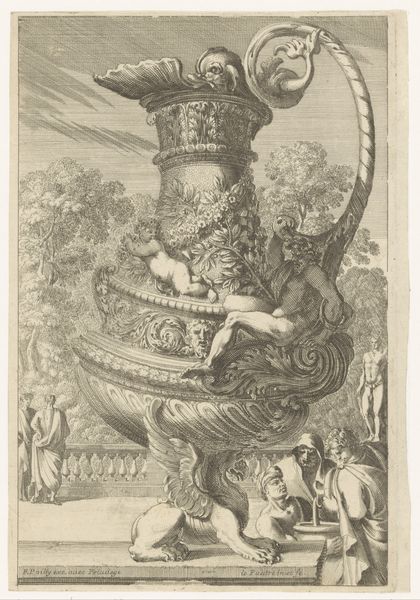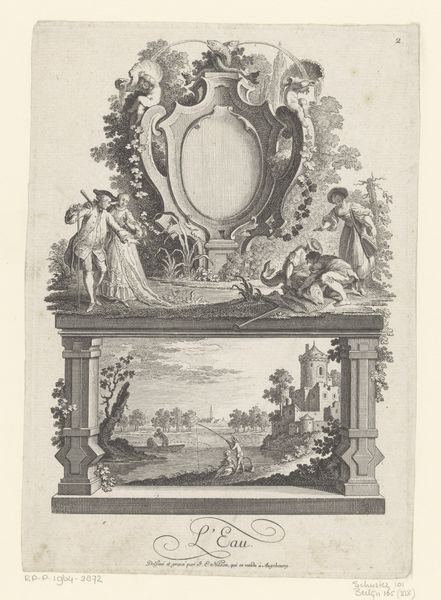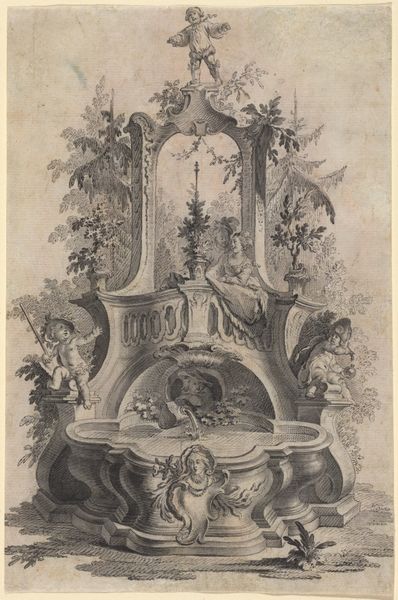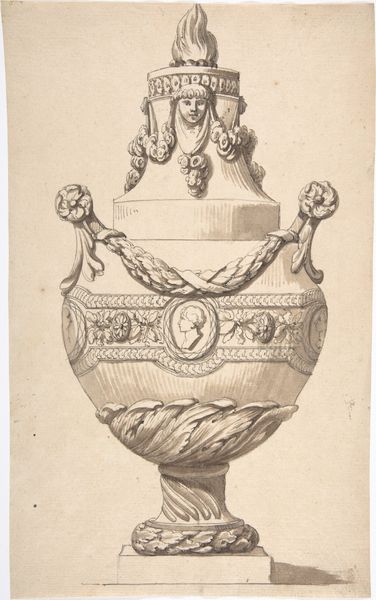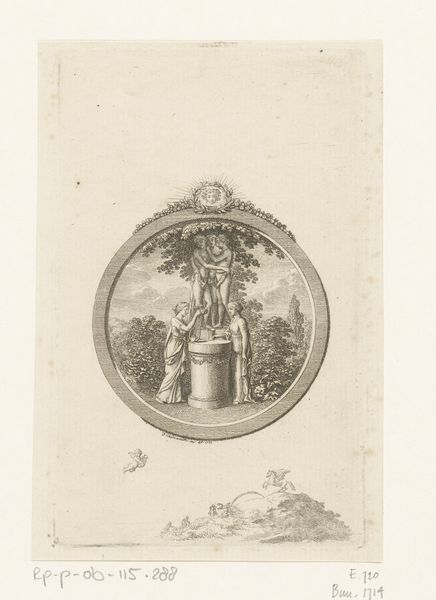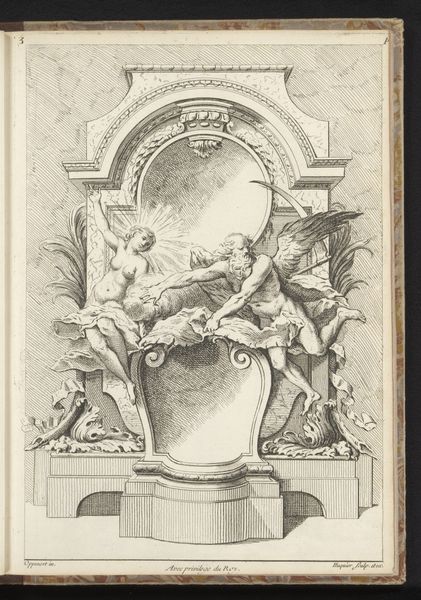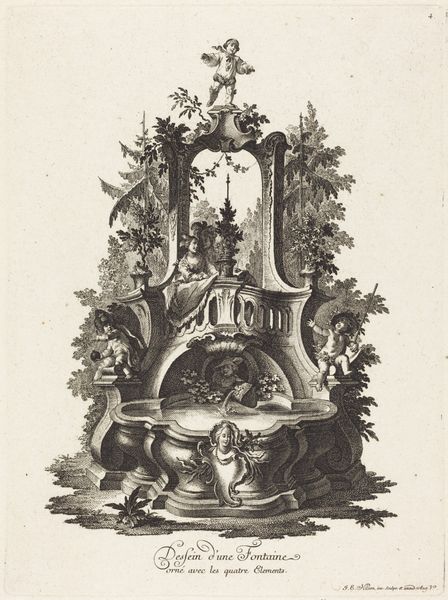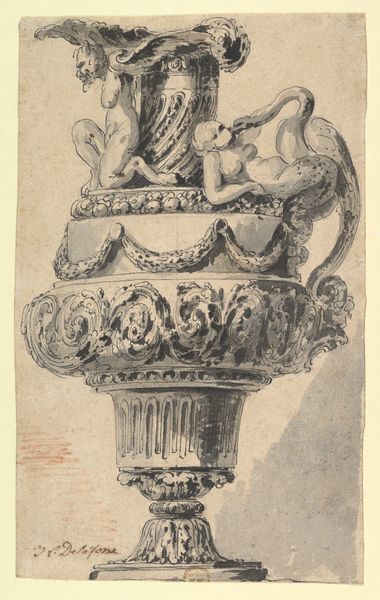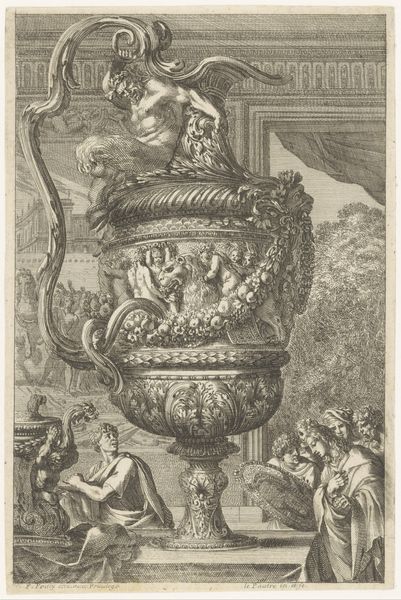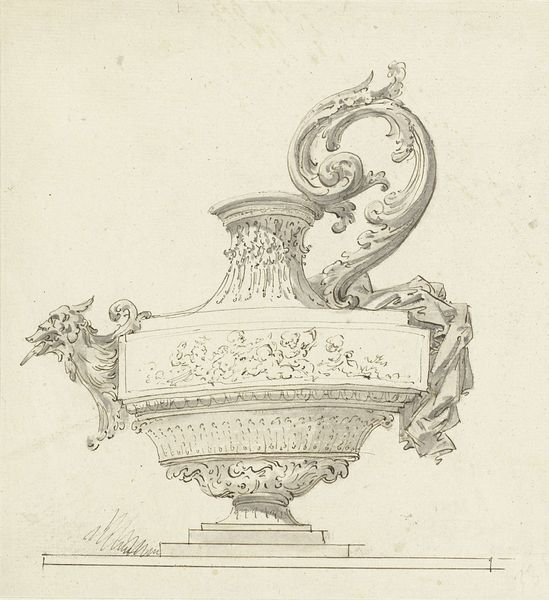
drawing, print, engraving
#
drawing
#
allegory
#
baroque
# print
#
book
#
old engraving style
#
vase
#
form
#
france
#
line
#
decorative-art
#
engraving
Dimensions: sheet: 10 1/2 x 8 3/4 in. (26.7 x 22.2 cm) book: 15 13/16 x 11 7/16 x 1/16 in. (40.1 x 29.1 x 0.2 cm)
Copyright: Public Domain
Curator: Looking at this engraving from sometime in the 1700s, we see Duplessis Fils' "Premiere Suite de Vases" as it resides within the Met's collection. What’s grabbing your attention initially? Editor: It's striking how grand and playful it is, all at once. Like something you'd expect to find in a fairy tale garden, maybe one inhabited by a mischievous cherub with a pet gazelle, balanced perfectly atop a slightly sinister Grecian urn. Curator: Precisely! The work exists within a very specific framework of Baroque sensibility, particularly in its decorative flourishes and allegorical touches. Notice how the linear quality creates a structured elegance? Editor: Oh, definitely. It's as if the artist is playing with geometry and fluidity, these firm lines creating this somewhat restrained yet elaborate visual experience. It gives this paradoxical energy, almost daring you to question whether this is architecture or pure fantasy. I’m compelled by that tension. Curator: The emphasis on form here exemplifies a key tenet of visual theory – pure form explored to the extent that function becomes almost irrelevant. We have a vase that's simultaneously practical and surreal. Consider its location within a book of prints - how does it contribute to discourse regarding aesthetics during this period? Editor: Well, positioning it in a book almost feels like a subtle commentary on the state of design at the time, a nod towards how everyday objects were becoming infused with art. As if every curated space aspired to become its own little art gallery. Almost pretentious, maybe, but delightfully so! Curator: I appreciate your characterization, your commentary certainly enhances the nuances present. It brings another interpretation, beyond just aesthetics or design theory, highlighting our own engagement and our preconceptions around 'art'. Editor: That's the joy of it, isn’t it? These pieces are not just echoes from the past, but ongoing conversations—ever evolving with whoever stands before them, whenever they look.
Comments
No comments
Be the first to comment and join the conversation on the ultimate creative platform.

